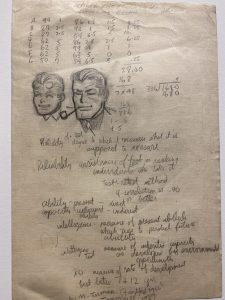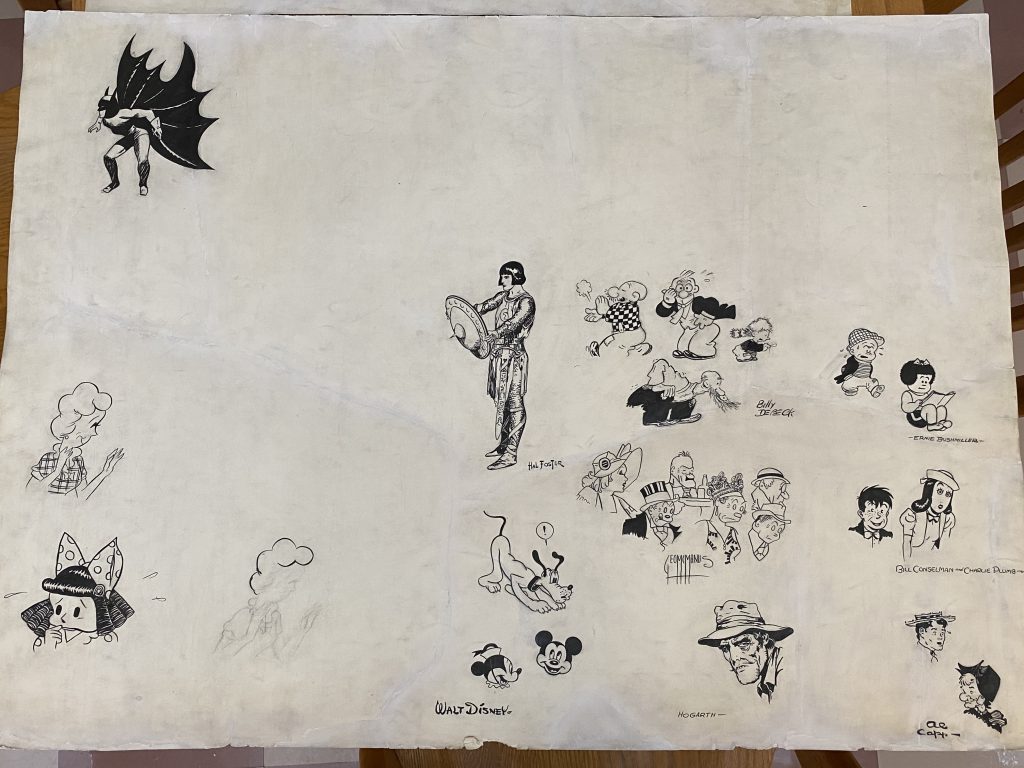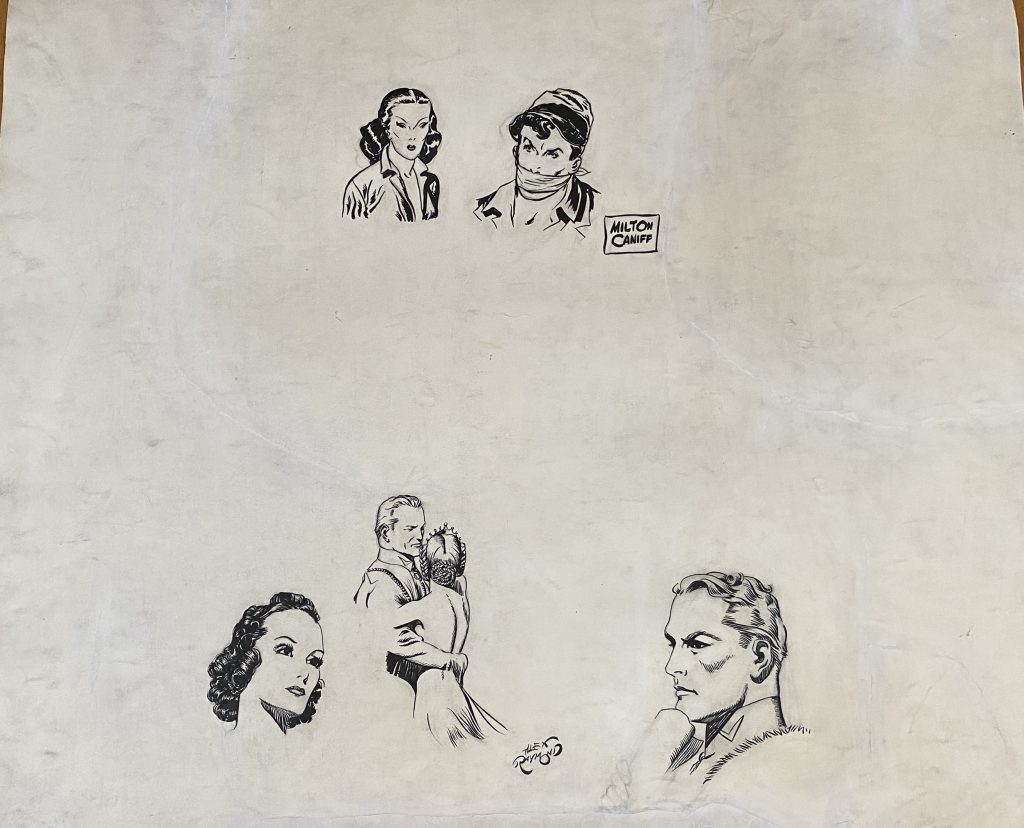A new addition to the Jerry Robinson papers sheds a startling light on the early years of a storied comics artist and illustrator.
In the Poconos, in the summer of 1939, Bob Kane–the artist who, with writer Bill Finger, had developed the character Batman a year earlier–spotted a teenager named Jerry Robinson, sporting a jacket covered with hand-drawn comics characters. When Kane learned that Robinson had drawn on the jacket himself, he offered the young man a job inking comic books (inking entails drawing over penciled images created by others, adding substance and depth). Robinson headed to New York City, where he was scheduled to begin a journalism course here at Columbia University, and moved in with an aunt in the Bronx. While he stayed at Columbia for over two years, before leaving to become a full-time comics artist, clearly his mind was on comics even during class-time, as this page from his notebook proves.

Late in 1939, Kane considered Robinson ready to draw original art, but he and Finger wanted an audition: they asked Robinson to draw several contemporary comics character, as well as Batman himself. Robinson’s son Jens, with his wife Janice, have just donated this extraordinary, and heretofore unknown, piece of comics history to the Rare Book & Manuscript Library. The two-page tryout was in parlous condition, brittle and covered in soot, and the Robinsons enlisted comic-art restorer Robert Dennis to flatten, clean, and mend it before donating it. It is clear that Robinson was not only masterful at mimicking the styles of the best known newspaper strip artists of the day, he could even reproduce their signatures.
The tryout includes characters still familiar to many people today, such as Mickey Mouse and his dog Pluto, Nancy and Sluggo, Li’l Abner and Mammy Yokum, and Prince Valiant. Others are likely best known to fans of early comics: George McManus’ “Bringing Up Father,” Billy DeBeck’s and Conselman & Plumb’s “Ella Cinders,” Alex Raymond’s “Flash Gordon,” Milton Caniff’s influential “Terry and the Pirates,” and a character by Burne Hogarth, creator of the “Tarzan” strip and eventual founder of what is now the School of Visual Arts. The characters in the lower left, below Batman, are unknown even to this curator.
While the Robinson papers include materials as diverse as Batman scripts for stories he drew (one written by Bill Finger himself), his Broadway illustrations for Playbill, tearsheets of 1960s syndicated strips “Still Life” and “Flubs and Fluffs” (the latter with the submissions teachers and students sent in for possible use), as well as books that were crucial to his artistic development–such as the N.C. Wyeth Robin Hood that informed his design of the character Robin, the Boy Wonder–nothing captures the tipping point from gifted amateur to professional artist quite like these three pages.


